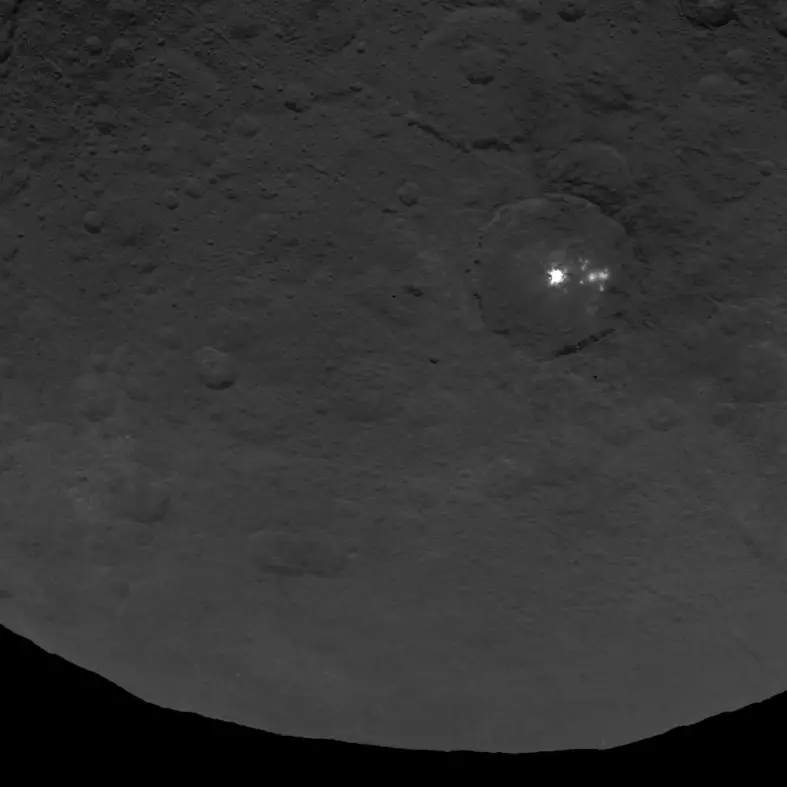
New findings from NASA have shown that Earth's nearest 'dwarf planet' Ceres is an 'ocean world' with huge reservoirs of salt water beneath its surface.
Ceres, the largest object in the asteroid belt between Mars and Jupiter, was previously thought to be a barren space rock.
However, the recent discovery of salt bound to water molecules suggests there could well be an ocean underneath the planet's Occator crater.
Advert
Maria Cristina De Sanctis at the National Institute for Astrophysics in Italy, said: "I'm extremely excited to find some evidence of liquid water, together with the fact that this body has a lot of minerals very interesting for the formation of life."
She added: "It's a good combination of chemical compounds that help in forming biological molecules."
The find comes after De Sanctis and her team of scientists from the United States and Europe analysed high-resolution images of Ceres taken by the Dawn spacecraft, which orbited the planet between 2015 and 2018.

Before it ran out of fuel, for its final phase the spacecraft managed to orbit 35km above the planet's surface to focus on the Occator crater, which is 20 million years old.
Advert
Earlier observations on the crater had suggested there may be salty water underneath, but De Sanctis said the team's discovery of hydrated sodium chloride provides much firmer evidence, as these kinds of salts are crucial for maintaining liquid water.
This, she explained, was a clear sign that Ceres used to have sea water, telling AFP: "We can now say that Ceres is a sort of ocean world, as are some of Saturn's and Jupiter's moons."
The researchers said the salt deposits appear to have been built up within the past two million years, indicating the brine may still be ascending from Ceres' interior - something De Sanctis said could be 'extremely important' for future studies.
The findings were published in a series of papers in Nature Astronomy, Nature Geoscience and Nature Communications.

Dr Carol Raymond, deputy principal investigator of the research, said: "It suggests Ceres is an ocean world and may have been geologically active in the recent past."
Advert
In an accompanying comment article, NASA's Julie Castillo-Rogezfrom the California Institute of Technology's Jet Propulsion Laboratory, said the discovery was something of a 'smoking gun' for ongoing water activity.
Castillo-Rogez, who did not work on the study, added: "Long believed to be a primitive body, Ceres is now an ocean world with deep brines at a regional and potentially global scale."
She also encouraged further research and a follow-up mission, saying this could help us understand the evolution of the planet and its 'potential habitability'.
Which at this stage, is pretty good to know...
Advert
Featured Image Credit: NASA/JPL-Caltech/UCLA/MPS/DLR/IDA
Topics: Science, World News, News, Nasa, space